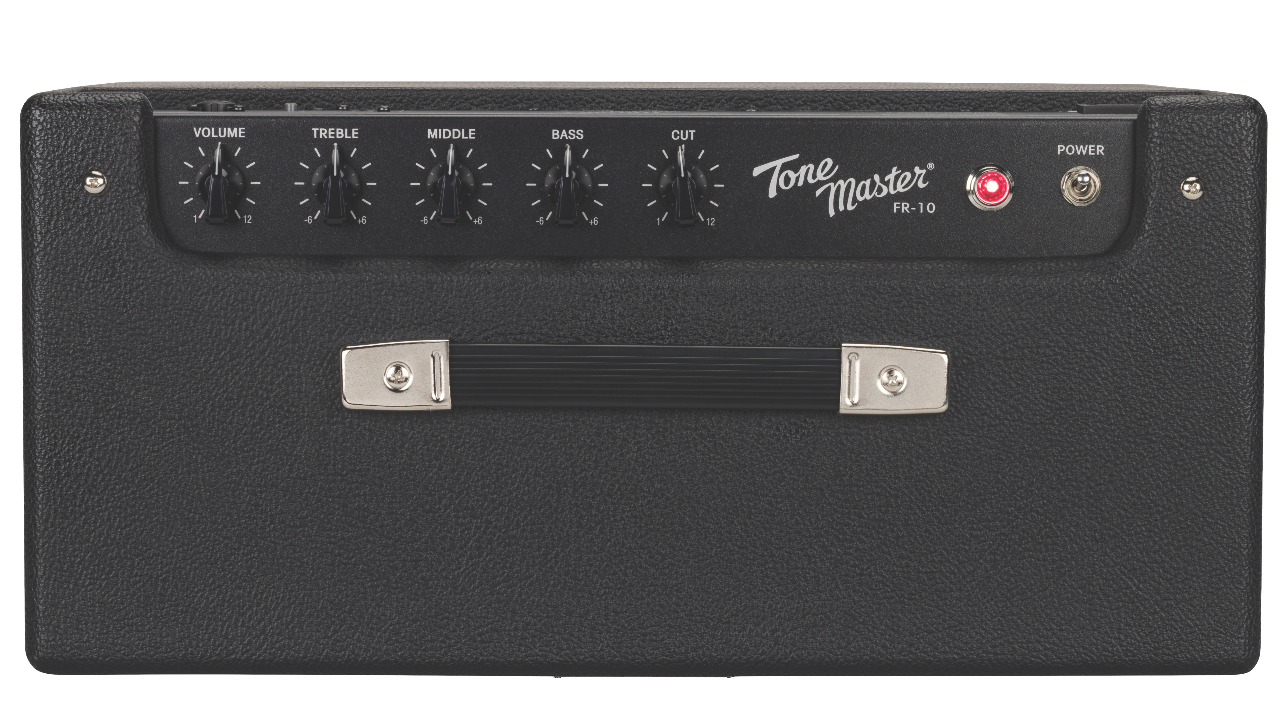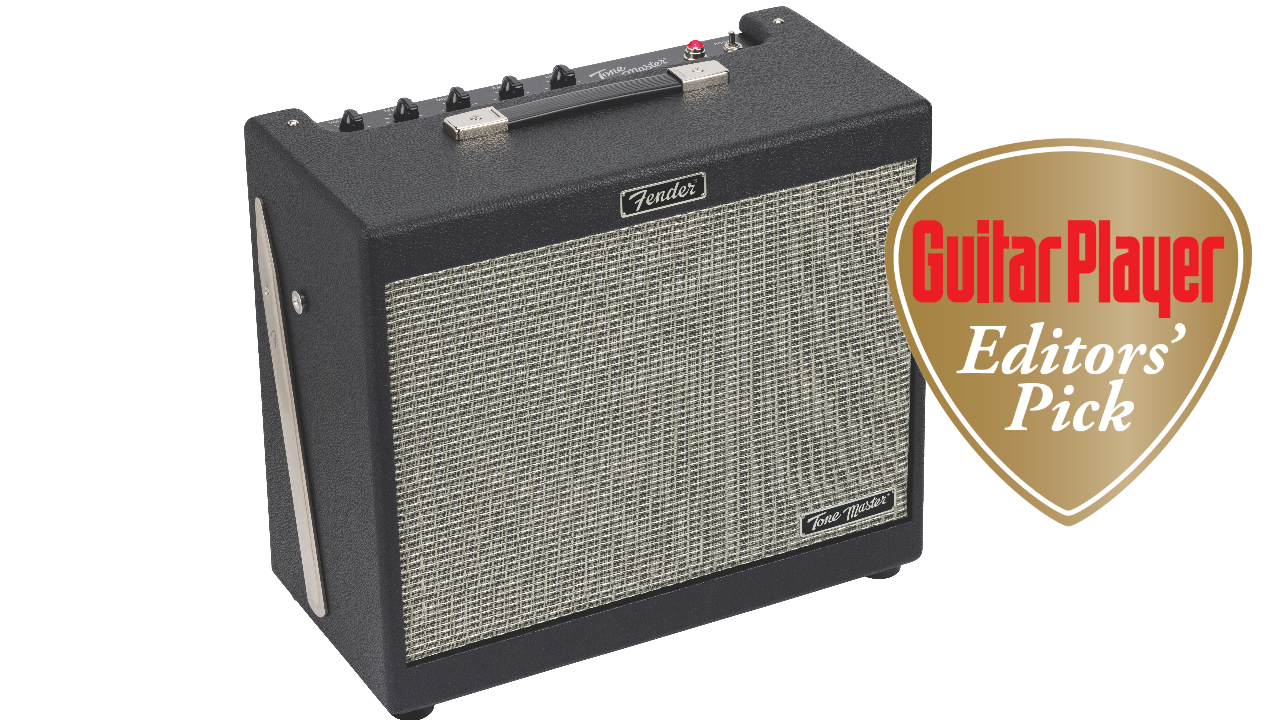GuitarPlayer Verdict
Great-sounding and easy to use with impressive sound quality, convenience, portability and price, the Tone Master FR-10 easily earns an Editors’ Pick Award
Pros
- +
A well-built and impressively good-sounding FRFR at an extremely good price, with appealing amp-like looks
Cons
- -
Some white noise audible
You can trust Guitar Player.
The rampant quest for suitable amplifiers and speakers to reproduce all that DSP-generated guitar tone as sound waves has yet to produce a clear winner. Powered cabs by Kemper, Atomic, Line 6 and Friedman have won over some fans, while others have conscripted powered monitor wedges.
But the gasp of relief heard around the world when Fender introduced its first full-range, flat-response (FRFR) powered cabs, the Tone Master FR-10 and FR-12, suggests that this sector is still very much up for grabs. We tested a pair of FR-10s to tap the full stereoscopic depths of the Fender's new Tone Master Pro modeler.
Designed as a Hot Rod Deluxe combo cab with a top rear-facing control panel, this box looks almost identical in its black Tolex with silver grille cloth. The FR-10 cabinet is made from light plywood and contains a 1,000- watt, Class-D power amp driving a 10-inch special-design speaker and a one-inch wide-dispersion high-frequency tweeter. (The FR-12 is also 1,000 watts but carries a 12-inch speaker.)
There’s a combined ¼-inch/XLR input and an XLR output for chaining to other destinations. Controls include an appealingly amp-like volume, treble, middle, bass, and cut (i.e. high cut). Amid all this, the tilt-back legs present as a strangely exciting feature, and the porting forward of this ’60s Fender innovation is extremely practical, too, enabling the guitar cab to achieve monitor-wedge projection.
In addition to the Tone Master Pro, I tested the FR-10 with a Neural DSP Quad Cortex and an Atomic Ampli-Firebox, since this powered cab will also be of interest to guitarists eager to cross the streams.

Through it all, I found it was both great sounding and extremely easy to use, delivering an impressive marriage of full-range response and amp-like feel, and giving an overall performance that I felt at home with much more quickly than some FRFRs at twice the price.
The unit presents some white noise even with no modeler plugged in, but its audible level doesn’t increase as you roll up the volume and becomes entirely unobtrusive when you start playing. The volume control has a very slow taper from zero to noon, then increases exponentially from there to two o’clock, but that’s easy to work with once you’re aware of it.
All the latest guitar news, interviews, lessons, reviews, deals and more, direct to your inbox!
For its impressive four-way ratio of sound quality, convenience, portability and price, the Tone Master FR-10 earns an Editors’ Pick Award.
Specifications
- CONTROLS Volume, treble, middle, bass, cut
- POWER 1,000 watts peak, Class-D
- CONNECTIVITY Amphenol ganged ¼”/XLR input, XLR output, IEC power cable connector
- CABINET Lightweight plywood
- SPEAKERS 10” special design speaker and 1” wide-dispersion high-frequency tweeter
- SIZE 19.5” x 17”x 9.5” (WxHxD)
- WEIGHT 26 lbs
- BUILT China
For more information, visit Fender's website
Dave Hunter is a writer and consulting editor for Guitar Player magazine. His prolific output as author includes Fender 75 Years, The Guitar Amp Handbook, The British Amp Invasion, Ultimate Star Guitars, Guitar Effects Pedals, The Guitar Pickup Handbook, The Fender Telecaster and several other titles. Hunter is a former editor of The Guitar Magazine (UK), and a contributor to Vintage Guitar, Premier Guitar, The Connoisseur and other publications. A contributing essayist to the United States Library of Congress National Recording Preservation Board’s Permanent Archive, he lives in Kittery, ME, with his wife and their two children and fronts the bands A Different Engine and The Stereo Field.


